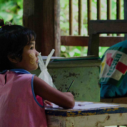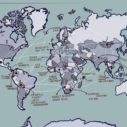
Search
Articles

The South African COVID-19 Vulnerability Index
The COVID-19 pandemic hit the world unexpectedly. The first case of COVID-19 in South Africa was reported in February 2020. In March of the same year, the President of the Republic declared a state of national disaster in South Africa. By the end of March 2020, South Africa went into hard lockdown. The COVID-19 pandemic threatened to have a devastating impact in South Africa, especially for vulnerable communities. A targeted response was crucial in determining where the most vulnerable populations were located in terms of COVID-19 transmission in the country. Research was initiated to identify populations at multiple risk and develop a geographic visualisation tool (1).

National MPI of Thailand: The compilation process and the policy uses
With the success of constructing the Child MPI in Thailand in 2018, the Office of the National Economic and Social Development Council (NESDC) took another step in 2019 by producing the National Multidimensional Poverty Index (National MPI) as an additional official measure of overall poverty in Thailand. It was also constructed with the purpose of monitoring the progress of SDGs, particularly SDG 1.2.

Leaving no one behind: a case for disaggregating by gender, ethnicity, race and caste in the global Multidimensional Poverty Index
In 2015, the Sustainable Development Goals were established with the central theme of Leaving No One Behind. Since its inception in 2010, the global Multidimensional Poverty Index (global MPI), produced together with the Human Development Report Office of the United Nations Development Programme, has always monitored various dimensions in which the poor experience deprivations. It leaves no one behind by illuminating how people experience poverty.

OPHI Executive Education: a new journey to support leaders and policymakers in their effort to confront poverty
Over a decade ago, Sabina Alkire and James Foster developed the Alkire-Foster (AF) method, a flexible technique for measuring multidimensional poverty, inequality, and wellbeing that goes beyond one-dimensional approaches to measure poverty such as income or consumption. Since then, the AF method has been widely used by governments, development agencies, NGOs, and even the private sector to build multidimensional measures grounded in people’s experiences and values, tailored to specific contexts. These multidimensional measures have been proven to be powerful tools to design and coordinate policies, allocate resources, and target beneficiaries.

Editorial – Dimensions 12
We open this issue of Dimensions with the experience of Laura Pabón, Head of the Directorate of Social Development at the National Planning Department in Colombia, who talks with Felipe Roa Clavijo about the implementation of the Equity Roundtable. This top-level body brings together ten government entities to monitor and develop strategies for social inclusion and the reduction of poverty and inequality. We learn how the Roundtable has been a key mechanism for analysing the current crisis and coordinating mitigating policies.












